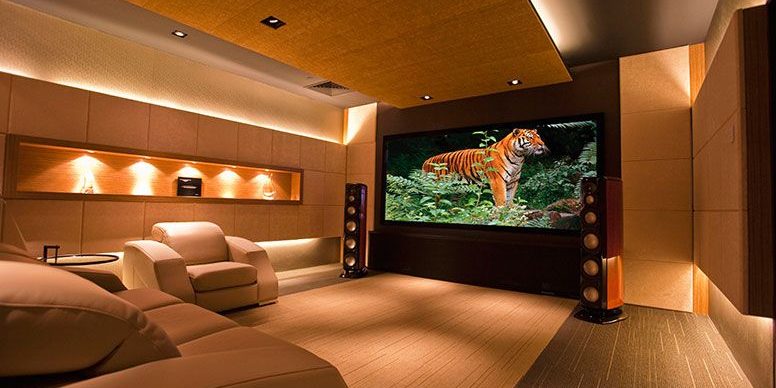As the winter weather sets in, you will likely be spending more and more time indoors. Of course, you will need something to pass the time. Many people have turned to creating a home theater design in their house. However, many of those same people have made a major mistake when it came to proper home theater planning.
Here we take a look at six considerations for home theater design.
Must-Know Steps for Home Theater Design
Type of Room
The most obvious question is, “Do you have the space for a home theater?” It can be as complex as a soundproof room with recliners and a movie screen and projector or as simple as a spare area with a large television and comfortable seating. But the details will make a difference in planning the rest of the home theater design.
For instance, is there too much light, which will cause screen glare? Is there hardwood floor, which will require some element to properly absorb sound? Take some notes about the space you will be creating so you keep them in mind as you move through your design.
Your Screen Needs
The size of your room—and how close you will be sitting to the screen—will determine how large (or small) of a television you will need. Once you determine the size, you will need to consider whether an LCD or OLED is right for your space.
Also, you will want to compare the benefits of 720p, 1080p and 4K Ultra HD resolution televisions. Three dimensional (3D) televisions are also available, if that is your preference. Another option is to use a video projector and screen.
Sound Options
Sound is a major component of an enjoyable home theater. To make it feel like a true theater experience is through either a home theater receiver, which combines the functions of radio, a preamplifier and a multi-channel amplifier, or a preamplifier/amplifier combination.
Another question to ask is if your room will require (or if you’d like) loudspeakers. Keep in mind this would also require a subwoofer for bass.
The Receiver
In most cases, a receiver provides an easy way to centralize the inputs and outputs—connecting your entire home theater. Many people choose to use a home theater/AV surround sound receiver to do just that, and that works well.
However, if your budget allows for it, you may want to consider separate preamp/processor, tuner and amplifiers. This allows for flexibility when upgrading parts of your home theater system down the road. It also can put less stress on your power supply.
The Source(s)
What will you watch most movies on? Will you require a DVD or Blu-Ray player? Do you prefer Netflix, Hulu and Amazon Prime and need access to the internet? Do you want cable available? All of these items require outlets and the proper wires and cables. They also all come with their own remotes. Perhaps a universal remote is best for your needs?
Behind the Scenes
This is where most people go wrong…while they’ve got the screen, the speakers and the furniture, they forget about what is needed behind the walls—home theater wiring. One of the biggest challenges of a home theater (and remodels in general) is making sure you have enough outlets, power and lines for lighting.
Don’t set your home theater design up for failure. Trust the professionals to help create your home theater design from the ground up—or the walls out—so you know every scene will pack a punch, not blow a fuse.
Ready to discuss your home theater wiring? Contact AC Electric today.






